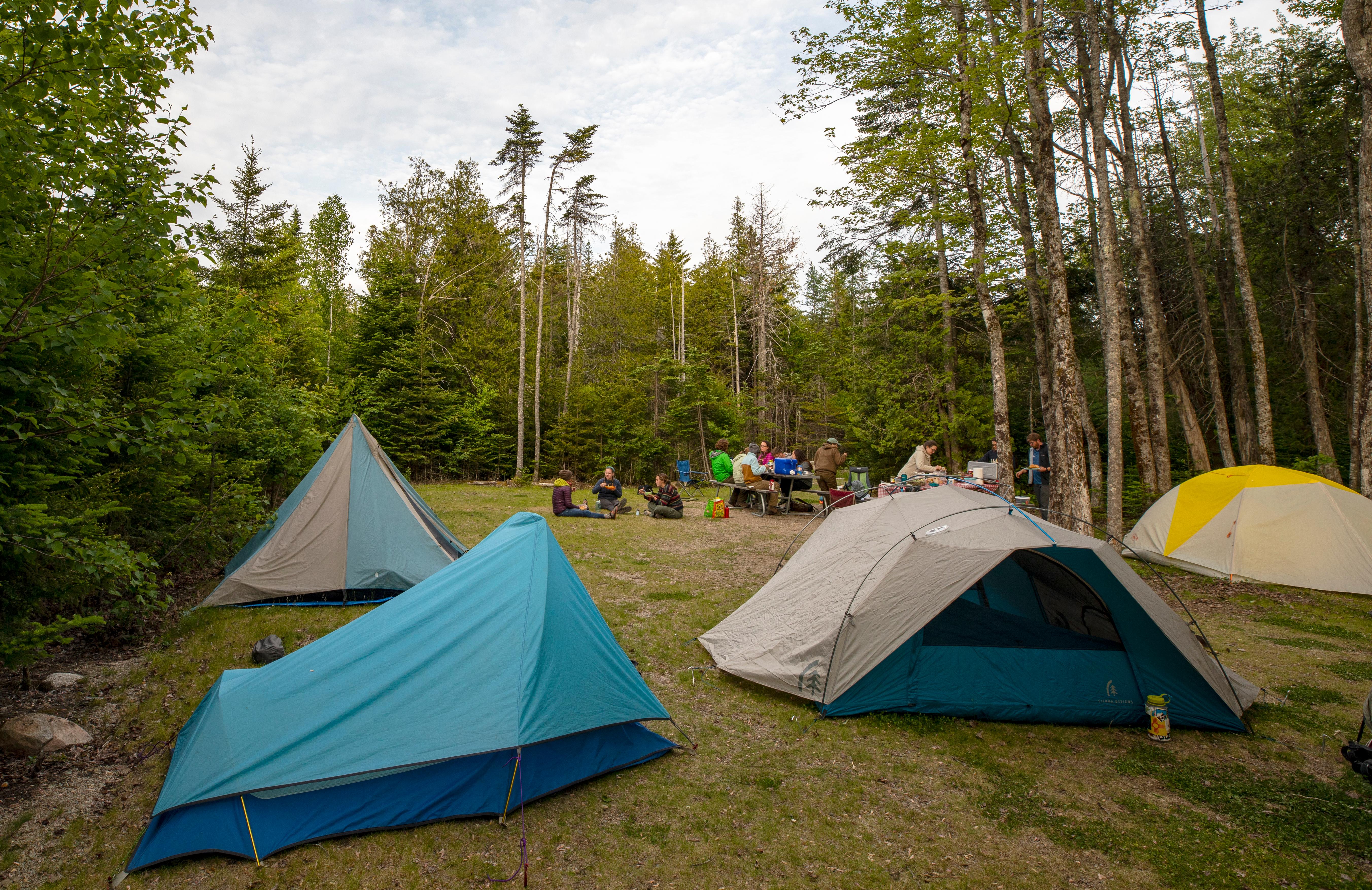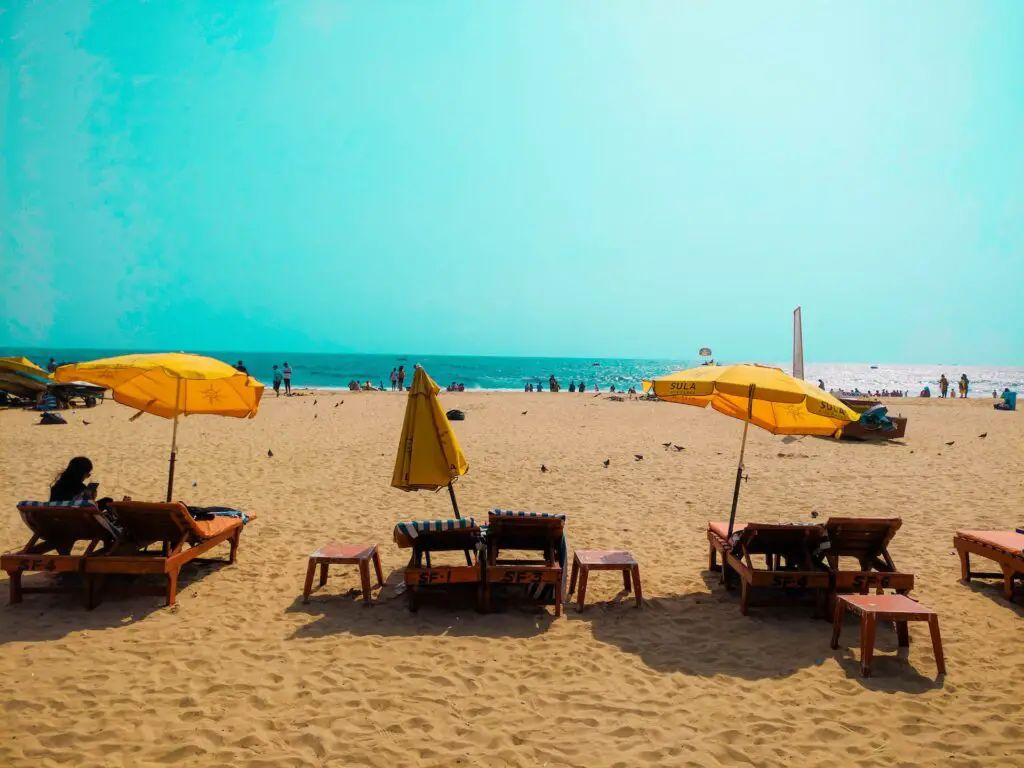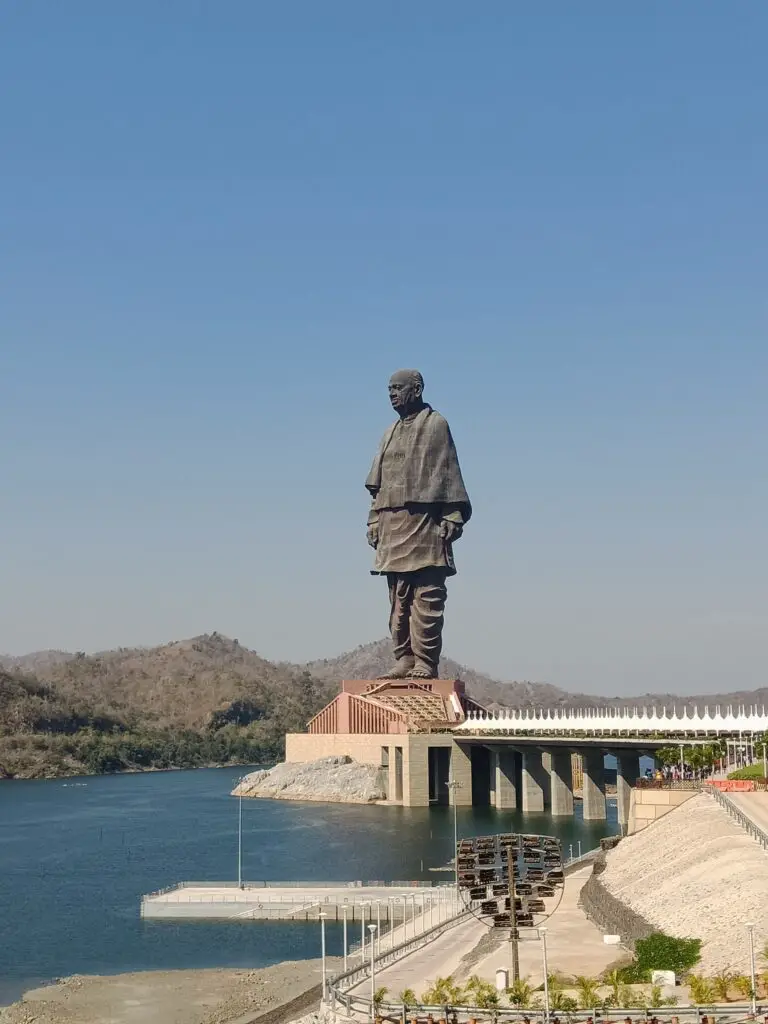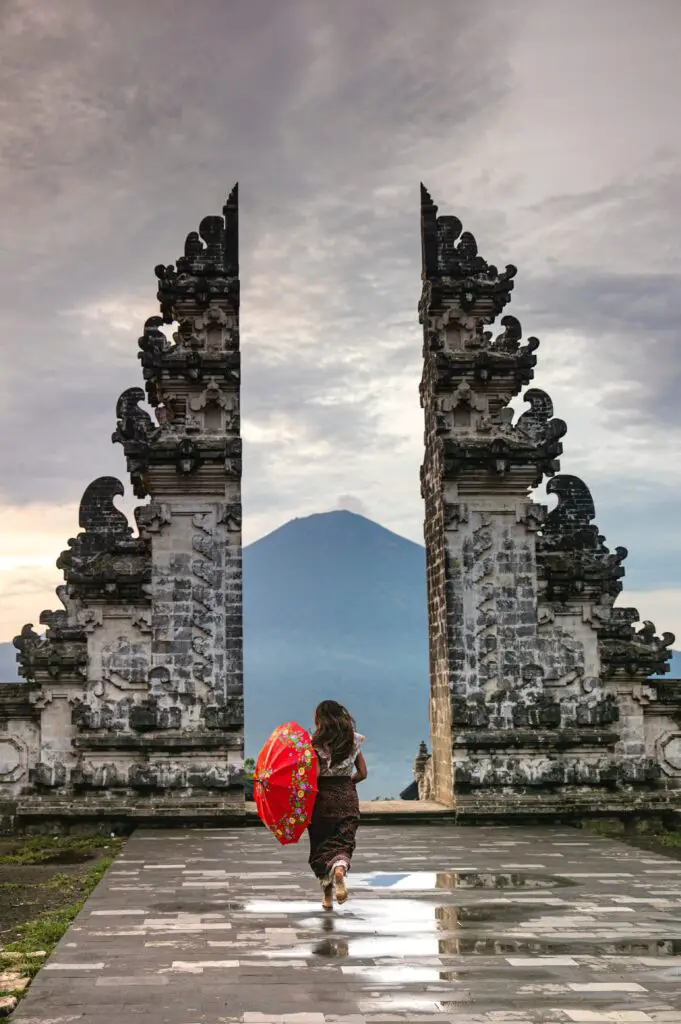Acadia National Park
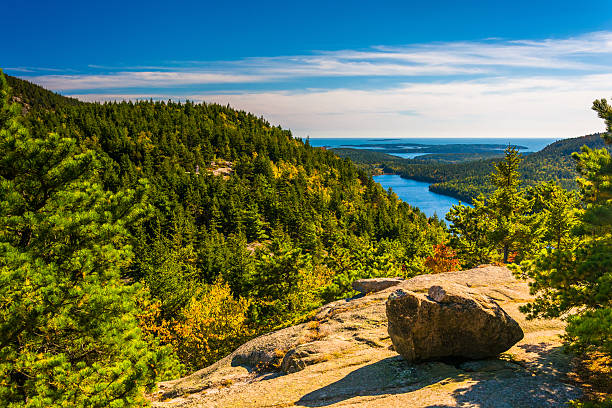
Acadia National Park is a highest rocky headland and natural beauty located in the Atlantic coastlines on Mount Desert in Maine. Park rich in habitants, wildlife’s, hiking trails, cultural heritages and mountain ranges, where visitors are more flexible and easy to take multiple adventure activities despite of their skill levels.
Ranked one of the oldest and 10 most visited national parks in the United States where around 4 million visitors are visiting annually. Spans 47,000 acres of land coverage compasses Granite Mountains, diverse ecosystem, rich history, ocean shoreline, woodlands, and stunning landscapes. To understand more about Acadia National Park we need to go much deeper inorder to read its history, unique things to do, activities, camping and climates. So, let’s see one by one;
Related Search: Zion National Park.
Acadia National Park History
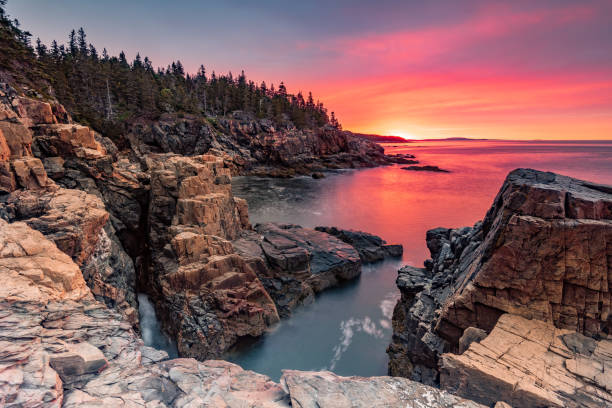
As usual many other national parks in the U.S including Acadia National Park is once the home for multiple groups of indigenous communities. According to some studies, Wabanaki, African American and Women are the initial people who lived here and were involved in many lifestyle activities. Even today the majority of parks, cultures, history and legacy are transformed from them.
Under that, Wabanaki is one type of tribe group who lived here and made a significant contribution to this land. Lived around 12,000 years ago, they adversely affected regions’ cultures, stewardship and local artworks.
After a long century, Acadia National Park never saw much changes until colonization of Mount Desert Island. Once Europeans stepped into the land slightly Mount Desert Island and surrounding areas took development process. Constructing summer residences, sanitisations centres and building hiking trails are done by them in the support of local tourism.
However once the region became popular and made development initiatives, in the late 19th century many popular wealthy industrialist and business peoples were involved and invested more on infrastructures, Island wide trail system and built summer cottages. Once wealthiest members gathered and purchased land and later donated to the United States government.
Later in 1916, Charles W. Eliot and George B. Dorr, 2 major Philanthropists and John D. Rockefeller made a proposal for national park status in front of the United States Government. Around 5,000 acres of land contributed to national park status and finally in 1919, President Wilson signed an act for establishing Lafayette National Park and Dorr Park as a park superintendent.
Inorder to sign for national park status, Acadia National Park recognised as the first national park set up in east of the Mississippi River. Even today parks continue to thrive as a place of natural beauty, recreational activity centre and home for unique landscapes and ecosystems for future generations. Make sure that Acadia National Park is a place where more numbers of conservative efforts and sustainable tourism are taken seriously in order to strengthen conservative park system and future sustainability.
Things to Do in Acadia National Park
Let us understand more about Acadia National Park in order to explore unique things visitors can do.
1. Enjoy Park’s Breathtaking Hiking
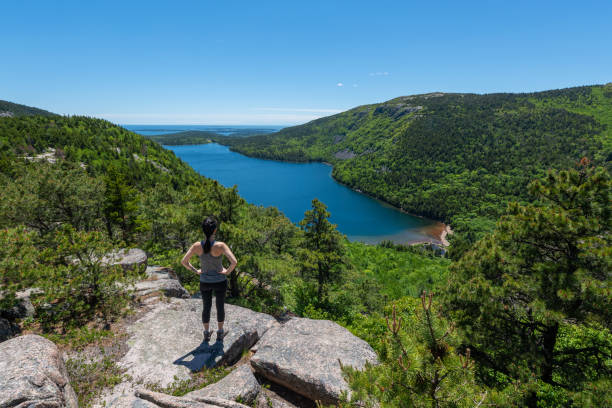
Despite all other national parks activities, hiking is considered as most mesmerising and one of the must on to do. As a backpacker it is very important to enjoy its 150 miles of hiking trails in order to immerse yourself in the lush forest, Rocky Mountains, and mountain tops. Take a leisurely stroll along the coast where a good number of easy, peaceful and plenty of hiking trails are available. There are a lot of different hiking trails available under Acadia National Park, such as Mount Desert Island, Schoodic Peninsula Trail, Coastal hikes, and Forest hikes and historic and lollipops are major categories.
Never miss to take Cadillac Mountain hiking, one of the highest points on the East Coast, where visitors are more fortunate to explore panoramic views of the park and several trails.
2. Take a Drive at Park Loop Road

Park’s most scenic road offers more glimpse of the surrounding regions and stunning mountain views. The 27 miles of Park Loop road is one of the easiest ways to enjoy the breathtaking views of the coastlines, mountains and forest areas. Although other major attractions like Sand beach, Thunder Hole and Otter Cliffs are help us to catch while driving your car. Loop roads are open year round to the general public and better to skip during winter season (December to Mid-April) when snow covers large stretches. Start your journey from Hulls Cove visitor’s centres and stop at the east side of Mount Desert Island.
3. Visit Interesting Jordon Pond
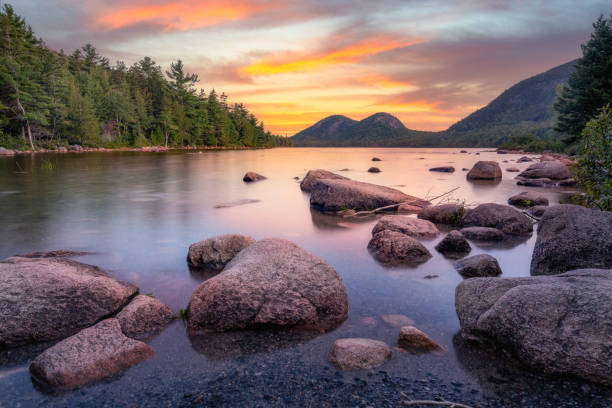
Never miss a landmark in Acadia National Park, Jordan Pond is a 3.3 miles of Pond Path edge where visitors can easily take wooden boardwalks, footbridges and see boulders. Moreover, it is often known for tranquil crystal clear waters and coverage of beautiful mountains. Since it is very close to the Carriage Road System, visitors can easily get hiking, horseback and bicycling trails. Yet, the attraction is filled by Arcadia’s famous picnic spots, Bubble Rock Trail, and Jordan Pond House. Never miss to taste soups, lobster rolls and popovers in Jordan Pond House restaurant which is highly recommended.
4. Explore Region’s Historic Places
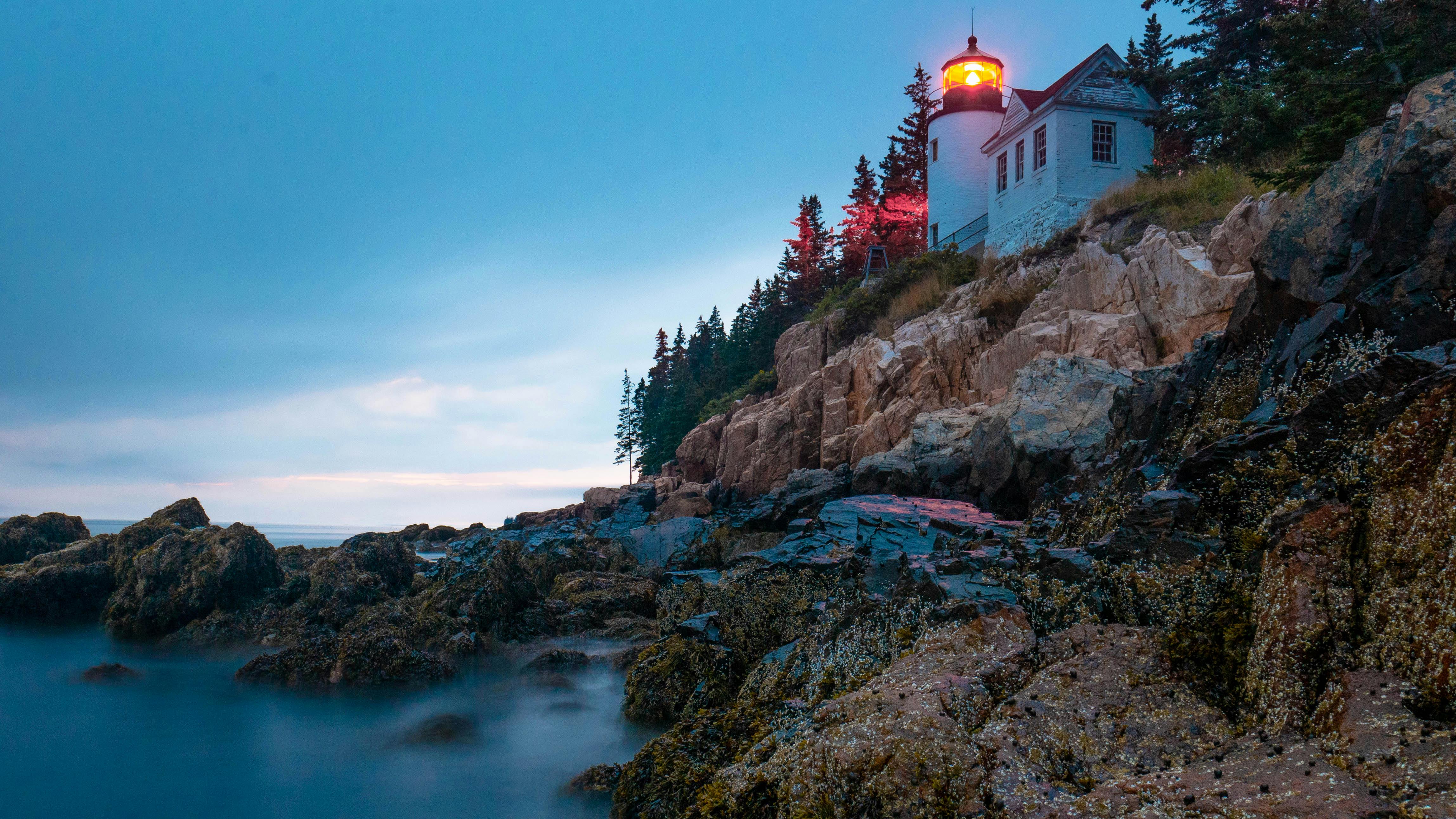
We knew how rich Acadia National Park is for outdoor activities and natural beauties, and in the same way the park is equally rich when it comes to history and culture. Blessed by the multiple historic sites like Carriage Roads and Gatehouses, Historic Trails, Moto Roads, Fire Towers and Lighthouse. Lighthouse plays a key role in parks’ history, which was built to serve as an aid to navigation of coasts, islands and working waterfronts. Although bridges like Cobblestone Bridge, Jordan Stream Little Bridge, Hemlock Bridge and so on, show us 20th century old bridges’ legacy. Don’t forget to visit and learn more about Memorial and Monument and Fire Towers of the Acadia.
5. Try to Enjoy Carriage Roads

Carriage Roads are paved paths spread across 45 miles in the Acadia National Park. Such historic old roads built by John D. Rockefeller Jr. are often known for biking and walking trails. Built from 1913 to 1940, Rockfellers try to highlight scenic parks, circling around Jordon Pond, Eagle Lake and Mount Desert Island while constructing these roads. Carriage Roads includes 17 unique stone-faced bridges, cedar signposts, 2 gatehouses and granite coping stones (often known as “Rockfeller’s teeth). Just take a leisurely stroll in the roads to enjoy Pak’s interior and beautiful sceneries.
6. Feel the Beauty of Thunder Hole

Thunder Hole is a one of the stunning natural phenomena where ideal backpackers surely spot roaring shorelines and sea crashing. Thunder Hole is a naturally carved small inlet in the rocks in Acadia National Park. Here waves are more rushed in nature which traps more air force creating pressure and distant thunder. Under Thunder Hole water can spray upto 40 feet high as well as the most rigorous roar sounds. Do not miss to experience gorgeous panoramic views of the Otter Cliff on the right, Sand Beach and Great Head to the left.
7. Enjoy Diverse Wildlife

Acadia National Park is home to 338 different bird species, aquatic species and mammals. Prime location for bird watching where favourite birds like falcons, owls, loons, ducks and shorebirds and eagles are more easily available to watch. The park also includes 40 different species of mammals such as Fox, seals, deer, beavers and minks. Since park holds unique coastlines and shires, surely visitors will catch some of the marine species too. Deeper oceans include seals, whales and porpoises like sunfish. Crabs, lobster and other crustaceans are more common sea species here.
Acadia National Park Camping/Campgrounds
Take a look at Acadia National Park campgrounds where good numbers of campsites offer multiple camp amenities at a very affordable price. Let’s discuss one by one;
1. Blackwood Campground

Located on the east side of Mount Desert Island, Blackwood Campground usually opens from May to October (off-season and winter camping are not allowed here). This campground requires 6 months prior booking at recreation.gov and cannot be issued in the office or in person. Just 5 miles away from the Bar Harbor, campground is usually available at the price $30 for single tent and campers, $60 for group tent sites.
2. Seawall Campground
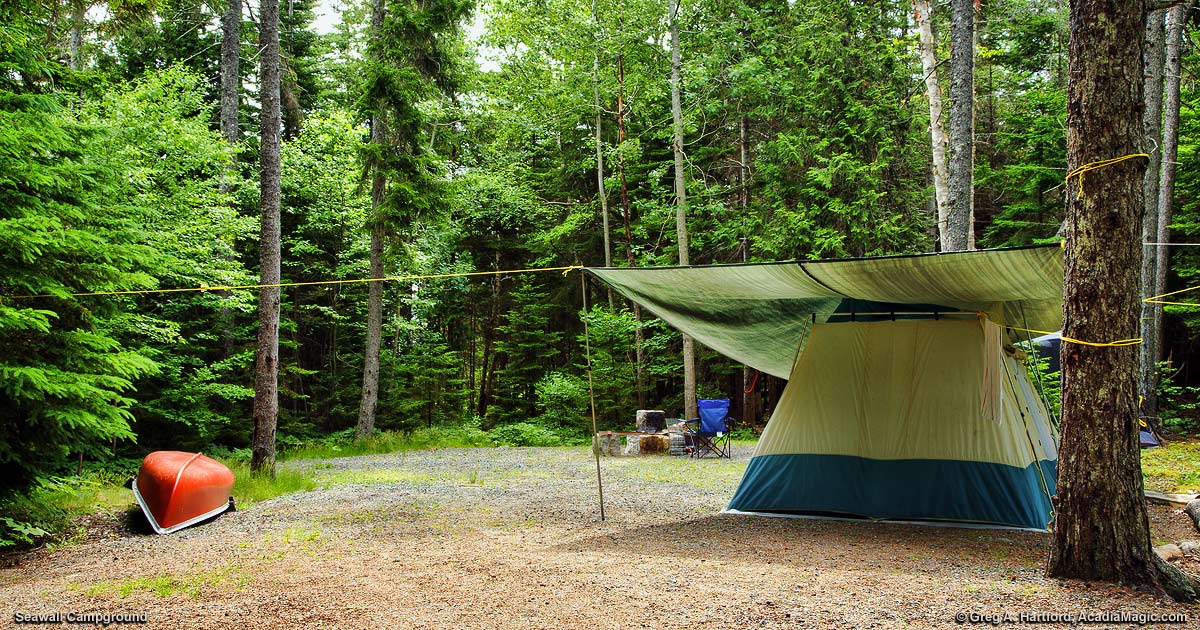
Seawall Campground located on the west side of the Acadia National Park, just 4 miles from Harbour. Open from May to October, when visitors need to pay $22 for a walk -intent, $30 for camper and $60 for group tents. Camping here requires 6 months advance booking at its respective website. Amenities include RV, Boat, Tent and many other site equipment.
3. Schoodic Woods Campground
Another popular campground is located 3 miles away from the southeast of Winter Harbor. Schoodic Woods Campground is open from May to October when Acadia National Park witnesses summer. Like other campgrounds, Schoodic also needs prior booking and no office or in person booking. $22 for tent sites, $60 for group tent sites and $30 for small RV tents. Make sure that setting, building, attending and using campfires are strictly prohibited here.
4. Duck Harbor Campground
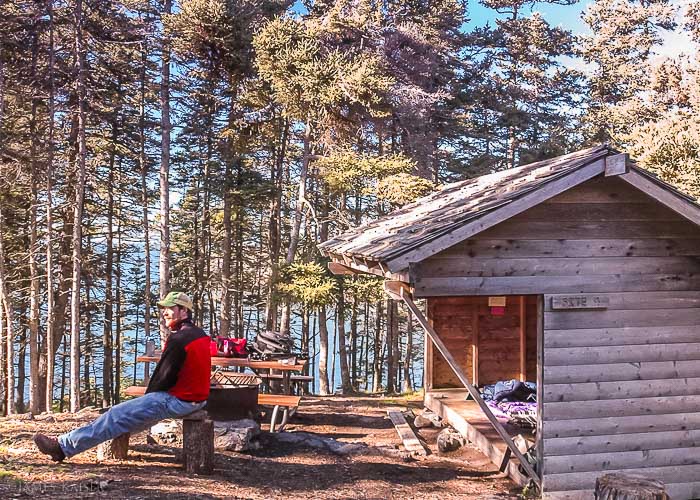
Duck Harbor Campground is the most popular campground designated only for sites and limited people. Situated on Isle au Haut, features includes fire ring, firewood, picnic table, composting toilet, and no pet friendly campsite. Visitors can spend a maximum of 3 nights and 4 days with backcountry and camping gear.
Acadia National Park Ticket Price
Entrance Fees
Acadia National Park includes 3 valid entrance passes, such as;
- Standard Pass: $20 to $35
- Annual Pass:$70
- America the Beautiful pass: $80 (valid for 12 months of unlimited visits to all national park)
Note: Valid for 12 months of unlimited visits to Acadia National Park.
- Private Vehicle Permit: $30
- Motorcycle Permit:$25
- Individual Permit: $15
For Blackwoods Camping Pass visitors need to Pay;
- $35 (from May to October)
- $20 (from April to November)
- Free (from December to March)
For Seawall Campgrounds;
- $28 (for walk in)
- $40 (for drive in)
Note: Please check updated ticket price before planing your trip at its official website.
Acadia National Park Size
Acadia National Park is around 47,000 acres or 19,020 hectares of total land coverage. Out of that, 35,332 acres of land owned by the National Park Service and the rest 12,416 acres of land owned by the conservation easements of the National Park Service.
Acadia National Park Climate/Weather Conditions
Weather and Climate conditions in Acadia National Park can be bifurcated into 4 seasons, each season offers a unique perspective of temperatures and outdoor activities.
1. Spring Season
Spring season is witnessing -1 ℃ to 21℃. So, visitors keep longer sleeve shirts and long pants. Spring is more friendly and easy to take walking, hiking, bird watching, dining and photography.
2. Summer Season
Summer season in Acadia National Park starts from June to August with more mild weather as well as long daylight. Summer daytime temperature varies between 7℃ to 16℃, and it will change from warm and sunny to cold and rainy in some seasons. During summer camping is a more recommended activity to visitors.
3. Winter Season
Winter starts from December to April, ranging from -10℃ to 2℃ temperature in Acadia National Park. Winter month’s offer a diverse range of outdoor activities like cross country skiing, snowshoeing, hiking and ice climbing. Never miss to experience 130 miles of cross skiing including more breathtaking activities throughout the national park.
4. Fall Season
Not a very popular season for backpackers, fall in Acadia is more variable weather condition. Temperatures vary from -1℃ to 21℃, usually occurring in October month only.
Best Time to Visit Acadia National Park

The Best Time to Visit Acadia National Park is around August to Mid-October. These months offer more ideal weather conditions, less tourist traffic and foliage to explore surrounding beauties and take outdoor activities in Acadia National Park.
March to May witnessing soggier, fog and occasional rain make us delay our trip and not have friendly atmospheres to enjoy its beauty. From June to August the region is filled by the huge crowds and high demand for camping and nearby hotels.
Related Articles: Yosemite National Park.

